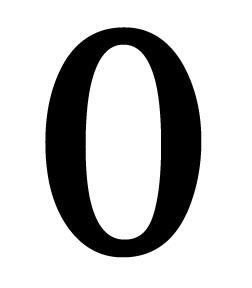
When the quantitative measurement really matters to determine guilt, we have to understand how that measurement is achieved. In the case of the analysis of biological samples that are tested, quantitation of an unknown is derived from a calibration curve. The proper construction of the calibration curve is a crucial component of quality control. It serves as the very foundation of the validity of the quantitative measurement. If the calibration curve is not properly formed then there will be bias. The measurement will be wrong. The reported result will not be true.
A particularized problem in analytical chemistry as preformed in a modern crime laboratory is that some crime laboratories use zero as a data point on the constructed calibration curve or force the calibration curve through the origin. For two basic reasons, this is wrong.
First, no machine is capable of measuring true zero. True zero is the total and complete absence of everything. As all analytical instruments have an inputted signal that is registered on some sort of detector, there will always be noise. Noise is detected signal. It is not true zero. The closest that the machine can measure zero is by running a true blank, meaning testing a sample with no analyte of interest in it and with what is thought to have nothing detectable by the detector. Even with a true blank, there will always be an offset on the y-axis that is the random noise signal detection. It will never be able to detect true zero. Therefore, the origin (the intercept of 0 on the x-axis and 0 on the y-axis) cannot ever be truly achieved as a true measured data point. So the very notion that an analytical instrument can measure true absence is a myth. We need to be careful with declaring a true concentration of an analyte is “zero,” as Avogadro’s number is extremely large, (N = 6.0223 x 1023 particles mol-1), it could be argued that it is impossible to ever say that a substance is not present. For the purposes of this discussion, “zero” means that for all practical purposes, the analyte of interest is not present. But this is like calling the reflection of the sun on the moon, moonlight. Neither moonlight or measured zero truly exist.
Second, the resultant calibration curve will be biased. The results from the zero-data-point-inclusive-calibration-curve will be biased high in the beginning of the linear dynamic range and will be be equivalent at one point with it being biased low at the highest end of the linear dynamic range at some point.
The above video is a demonstration of the bias that can occur if zero is included as a data point. The same exact response from the unknown can be dangerously miscalculated.
An even worse form of inappropriate construction of a calibration curve is “force through origin” which is an option with some systems. What this does is force linearity through the origin. This will result in even greater bias than using zero as a data point in constructing the calibration curve.
From EM 200-1-1. Title: Environmental Quality – Validation of Analytical Chemistry Laboratories
A calibration curve (whether linear or nonlinear) must not be forced through the origin unless it is demonstrated (e.g., during method development) that the intercept (i.e., y[x = 0]) is not statistically different from zero (e.g., by performing a t-test for the y-intercept or comparing it to the MDL.) Arbitrarily forcing a calibration curve through the origin may adversely impact low-level quantitative results. Similarly, when calibration curves are generated using regression analysis, the curves must not be artificially weighted toward the origin by including the point (0,0) one or more times.
In short, linearity through zero is a statistical assumption and not a rationale for reporting results below the calibration range demonstrated by the analysis of the standards.
Additional sources include:
- Environmental Protection Agency’s (EPA) MDL procedure1 promulgated at 40 CFR (Code of Federal Regulations) Part 136, Appendix B, rev. 1.11
- Analytical Detection Limit Guidance & Laboratory Guide for Determining Method Detection Limits (“It is not acceptable to force any calibration curve through zero.”
- American Society for Testing and Materials, “Standard Practice for Intralaboratory Quality Control Procedures and a Discussion on Reporting Low-Level Data”, Annual Book of ASTM Standards, Vol. 11.01, designation D 4210-89, pp 14 – 20.
Do you know what your crime laboratory is doing?


